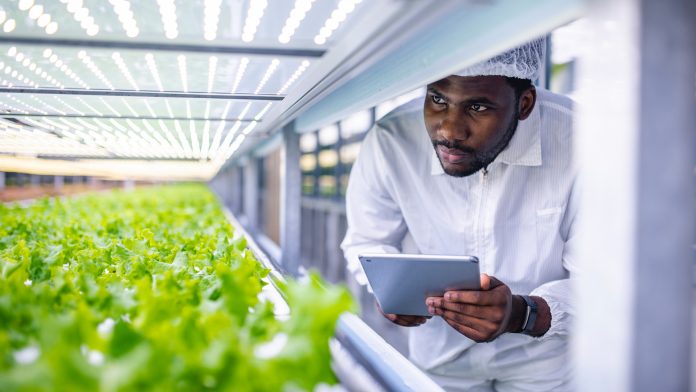A novel investigation into the Rubisco enzyme that is vital in plant photosynthesis may lead to methods that enhance crop yields and growth.
The study, led by scientists from the Australian National University (ANU), has indicated that Rubisco – arguably the most crucial protein on the planet, essential for driving photosynthesis – enhances CO2 acquisition, which can sap the plant’s energy that could otherwise be used to boost yield.
The study is published in PNAS.
Rubisco performs its function by capturing and fixing CO2 into the nutritious sugar that powers plants; however, this process can occur at a considerably slow pace that hampers the efficiency of photosynthesis. This is because Rubisco fixes oxygen molecules instead of CO2 around 20% of the time, meaning that vital energy is lost in this process called photorespiration, where enzymes travel through three different compartments within the cell of the plant.
Ben Long, the leader of the study from ANU, said: “Many photosynthetic organisms have evolved mechanisms to overcome some of Rubisco’s limitations. Among these organisms are microalgae and cyanobacteria from aquatic environments, which have efficiently functioning Rubisco enzymes sitting inside liquid protein droplets and protein compartments called pyrenoids and carboxysomes.”
The behaviour of these compartments is currently unknown, which prompted the investigators to construct a mathematical model to analyse the chemical reaction performed by Rubisco, which releases positively charged protons as it accumulates CO2 from the atmosphere.
Long said: “Inside Rubisco compartments, these protons can speed up Rubisco by increasing the amount of CO2 available. The protons do this by helping the conversion of bicarbonate into CO2. Bicarbonate is the major source of CO2 in aquatic environments, and photosynthetic organisms that use bicarbonate can tell us a lot about how to improve crop plants.”
The innovative model allowed the team to gather a more comprehensive understanding of why the Rubisco compartments potentially improve the enzyme’s function, with one theory suggesting that the low CO2 conditions of ancient Earth prompted cyanobacteria and microalgae to evolve the compartments. The team are now aiming to create these specialised Rubisco compartments in crop plants to enhance their yields.
Long said: “The outcomes of this study provide an insight into the correct function of specialized Rubisco compartments and give us a better understanding of how we expect them to perform in plants.”









